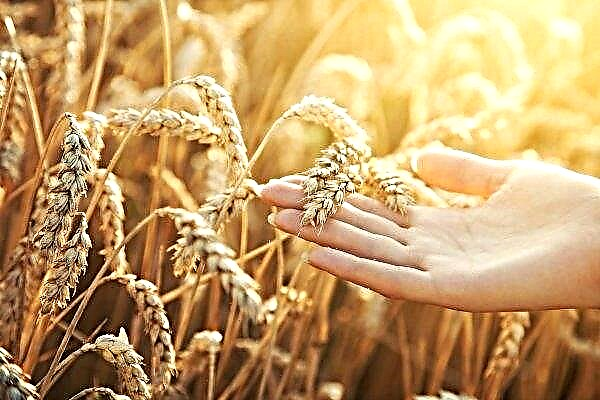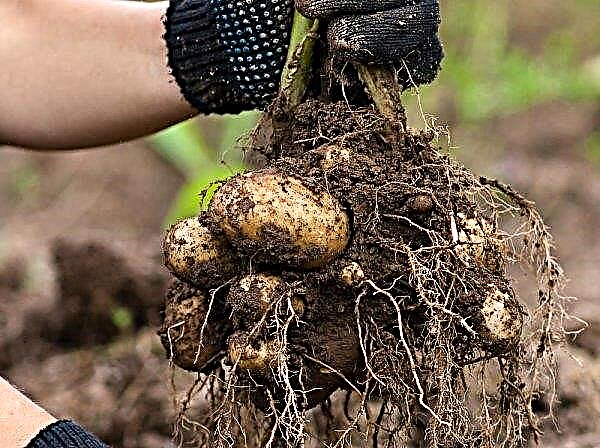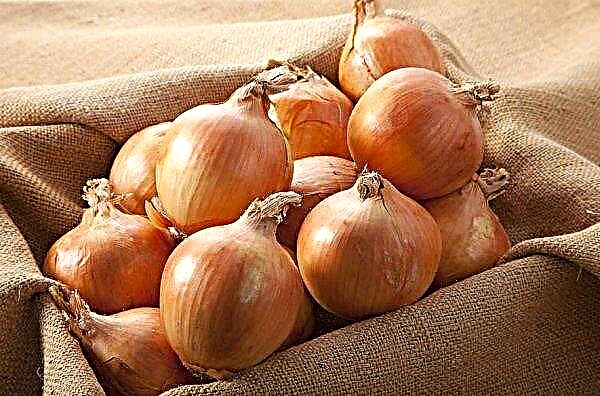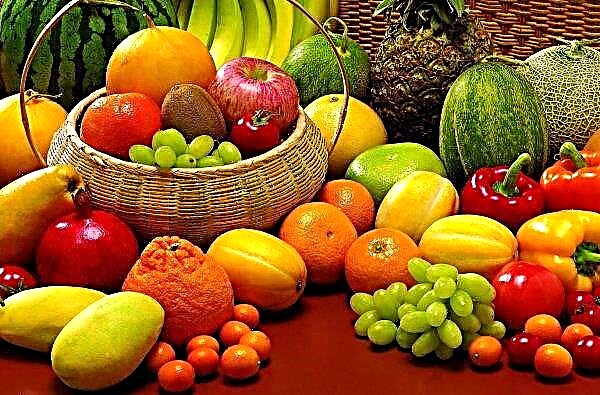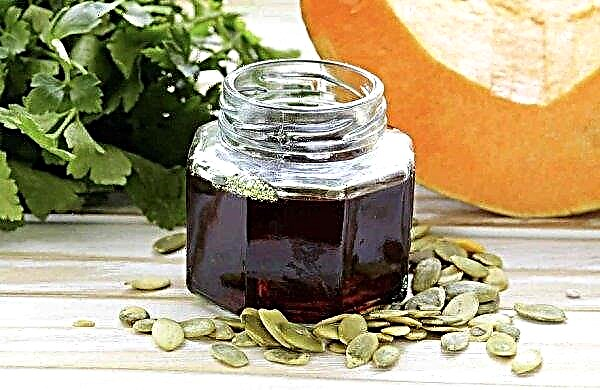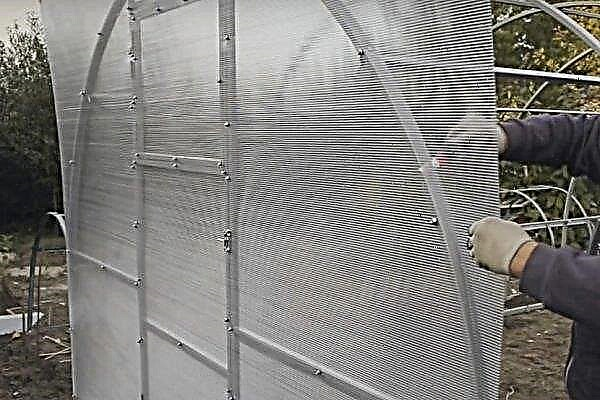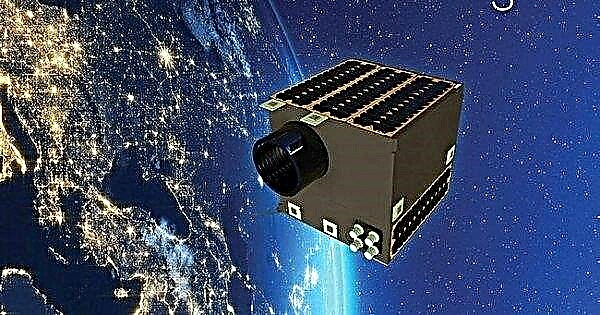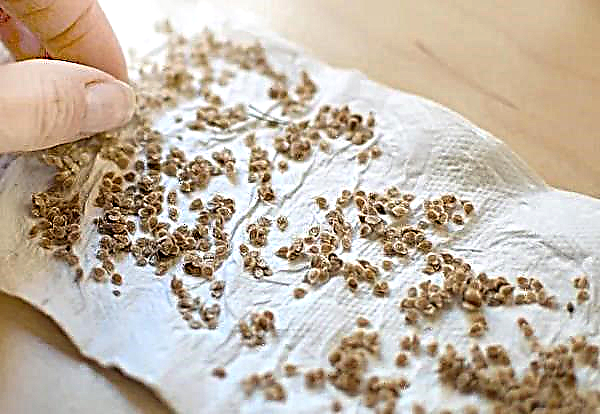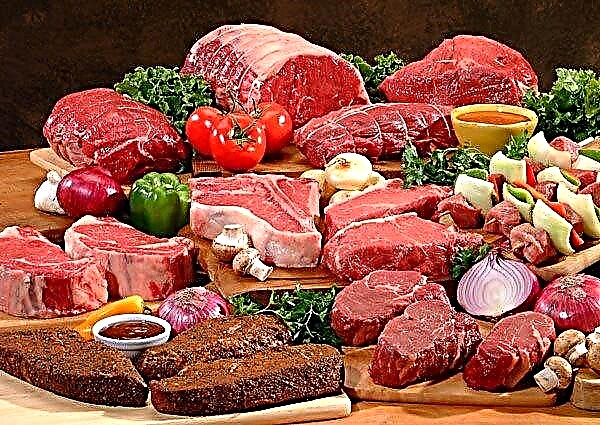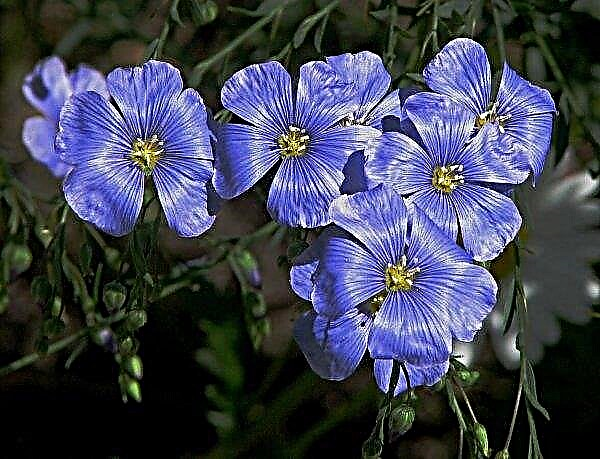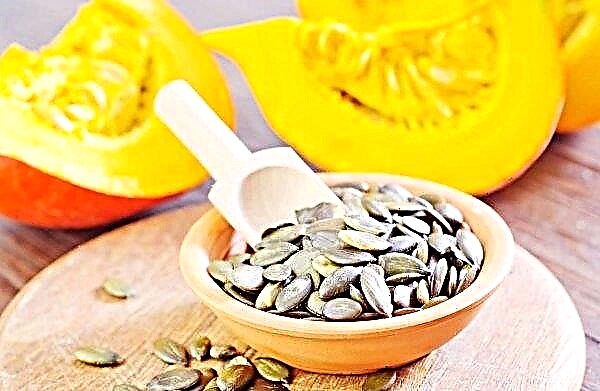A fundamental factor influencing the production of a high-quality potato crop is a properly selected planting material. A promising dining culture in this perspective is Vector. About its pros and cons, as well as the rules of cultivation, read below.
Selection history
The variety was obtained, thanks to the efforts of specialists of the All-Russian Scientific Research Institute named after Lorha. " To obtain Vector varieties were used:
- Glow;
- hybrid license plate 1977-76.
In 2014, potatoes of this variety were entered in the state register of selection achievements of the Russian Federation and allowed to cultivate in the central regions.Did you know? Potato fruits in Europe appeared in 1580, however, until the XVIII century. the plant was not cultivated, as it was believed that the use of root crops caused leprosy and other diseases that could not be treated.
Photo gallery
There is a Belarusian variety with the similar name “Vectar”, which is called Vector in common people - they should not be confused, as these are 2 cultures that are excellent in their characteristics.Characteristic and Description
The main features of potatoes Vector:
- mid-ripe dining culture, ripening in 80-100 days;
- the variety is moderately demanding on soil quality, characterized by high drought tolerance;
- bushes are low, compact with an upright stalk;
- the leaf plates are small, of an intermediate type, painted dark green;
- flowers are large, purple;
- the shape of the fruit is round-oval;
- the mass of a commodity unit varies between 92–143 g;
- the fruits are covered with a densely structured peel, the surface of which is dotted with small red eyes;
- the pulp is dense, yellowish in color, secreting a large amount of juice on the cut;
- during heat treatment, the flesh acquires a friable structure;
- the fruits contain 16.7-17.5% of starch, which allows the use of products on an industrial scale for the production of chips, flour, starch, convenience foods (dry puree);
- the variety is resistant to potato cancer, mosaics, the virus of twisting leaves, tops and tubers are tolerant to late blight;
- culture is not resistant to the golden nematode;
- potential yield - 700 kg / ha, average - 180–263 kg / ha;
- the tubers are characterized by good keeping quality - the yield is 90–98%, depending on the climatic conditions of the cultivation region.
Did you know? Until the beginning of the active cultivation of potatoes in Russia, the main food was turnip.
Advantages and disadvantages
Choosing a variety of potatoes for cultivation on a particular site, it is worth considering all its pros and cons, which will optimize the quality of seasonal work and increase productivity.
- The main advantages of the variety:
- high productivity in any growing conditions;
- drought tolerance;
- high commercial quality and crop preservation;
- the possibility of universal use of root crops;
- resistance to most diseases dangerous for solanaceous crops;
- good transportability;
- high appreciation of taste.
- Among the shortcomings can be noted:
- quite a long period of ripening;
- susceptibility to the golden nematode;
- fruits contain a lot of starch.
Planting potatoes
Vector is an undemanding culture. However, when the basic agricultural rules are followed, it shows a higher yield and is practically not affected by diseases and pests.
Optimal landing times
The best time for planting is the first decade of May for the central and northern regions. In the southern regions, potatoes can be planted in April, when the danger of return frosts is over.
Important! At the time of potato planting, the soil temperature at a depth of 10 cm should not be lower than + 10 ° C.
Crop rotation rules
There are no special requirements regarding the composition of the soil - the variety bears fruit well on any soil. But, if it is possible to plant potatoes on loam, sandy loam or chernozem, then the yield will be much higher. The only requirement is the level of acidity. Ideal pH values are 4.5–5.5.
The vector needs a lot of light, so it is better to place it in the southern and southeastern zones with low groundwater (at least 2 m).
Do not forget about the rules of crop rotation. Potatoes can only be returned to their original place after 3-5 years. Planting potatoes is best done after:
Planting potatoes is best done after:
- green manure - mustard, oats, peas, rape, phacelia, beans;
- Pumpkins
- cucumbers
- bow;
- garlic;
- squash, squash.
- pepper;
- Tomatoes
- eggplant.
Soil requirements
Soil preparation should begin in the fall. First of all, it needs to be dug to a depth of 20–25 cm and disinfection using wood ash. For each m² contribute 500 g of powder. After 1-2 weeks, the soil is again dug up to a similar depth and manure is covered with manure - 10 kg per m². If the soil is heavy and does not allow moisture to pass well, then 10 kg of sand and peat are additionally applied to each m². In the spring, deep plowing is carried out again. To disinfect and improve soil fertility, Phytosporin is introduced - 5 g of powder per 10 l of water. Watering the soil with Fitosporin is carried out a week before planting potatoes.
In the spring, deep plowing is carried out again. To disinfect and improve soil fertility, Phytosporin is introduced - 5 g of powder per 10 l of water. Watering the soil with Fitosporin is carried out a week before planting potatoes.
When landing in the pit, make:
- 15 double superphosphate;
- 12 g of potassium sulfate;
- 10 g of urea.
Preparing planting material
Planting material is selected according to 3 criteria:
- external data;
- the form;
- dimensions.
Important! For planting tubers with processes more than 3 cm are not suitable.
After selecting the seed, it needs to be germinated. To do this, the products are laid in one layer on wooden pallets or in boxes. In this form, leave for a week in a dark room, at temperatures up to + 20 ° C and a relative humidity of 80%. Daily sprouting of tubers with an ash solution allows accelerating germination and preventing infection with diseases and pests. 3 days before planting, seed directly in boxes or on pallets begins to be taken outside and left in the sun.
Daily sprouting of tubers with an ash solution allows accelerating germination and preventing infection with diseases and pests. 3 days before planting, seed directly in boxes or on pallets begins to be taken outside and left in the sun.
Landing technology
A distance of 70 cm is left between the rows of potatoes, 30–35 cm between the tubers in a row. The planting depth depends on the quality of the soil:
- 10-12 cm - light soils;
- 8–10 - heavy and loam;
- 5 cm - clay.
 Potato planting technologies In each well, place 2 potatoes with sprouts up and carefully sprinkle with soil, so as not to damage them. After planting potatoes, the site is leveled with a rake.
Potato planting technologies In each well, place 2 potatoes with sprouts up and carefully sprinkle with soil, so as not to damage them. After planting potatoes, the site is leveled with a rake.Care Features
After emergence, hilling is carried out. The procedure is carried out manually or using a cultivator. The event consists in the formation of hills from the soil to the height of the tops. This avoids freezing of the ground part of plants during return frosts. In regions where such a danger is absent, the event may not be held.
During the entire growing season, loosening the soil and cleaning it of weeds is mandatory. This is necessary to preserve moisture and nutrient medium. Near the plants, the soil is loosened to a depth of 5 cm, between rows - 10-15 cm.
At the initial stage of growth, plants need a sufficient amount of nitrogen to form the ground part. To do this, after hilling, 0.5 l of urea solution (1 tbsp. Urea per 10 l of water) is added to each bush.  In the budding phase, plants are fertilized with a solution of potassium sulfate (1 tbsp. L / 10 l of water). In the middle of flowering - double superphosphate (1 tbsp. Each time, fertilizers are applied in an amount of 0.5 l per bush.
In the budding phase, plants are fertilized with a solution of potassium sulfate (1 tbsp. L / 10 l of water). In the middle of flowering - double superphosphate (1 tbsp. Each time, fertilizers are applied in an amount of 0.5 l per bush.
Over the entire growing season, potatoes are watered 4 times, trying to combine this event with the application of fertilizers. Water consumption per bush is 2–2.5 liters. Before flowering, the crop does not need watering. With the beginning of flowering, the first watering is combined with the application of fertilizers. In the evening, 0.5 l of fertilizer is applied to each bush, and in the morning they are irrigated - 1.5–2 l of water per plant, depending on soil quality and climate conditions. Moisture is introduced into the aisles. After 24 hours, loosening is carried out.Important! The vector is characterized by high resistance to drought, but in extreme conditions, when the soil cracks and becomes covered with a dense crust, the yield decreases markedly. On this basis, precipitation alone will not be enough for the full development of tubers.
Pest and Disease Control
With proper care, the Vector is practically not infected with fungi. To do this, at the time of loosening the soil, 200 g of wood ash is applied to the bush.
With increasing soil moisture, late blight may occur. It is eliminated by removing the affected ground parts of the plant and spraying with Fitosporin 2 times after 14 days (10 g of powder / 5 l of water).
Of the pests for the Vector are dangerous:
Harvesting and storage
Harvesting occurs in late August - early September. 3-4 days before harvesting, the tops are mowed. When mowing tops, the growth of tubers stops, but the peel continues to thicken, which contributes to better preservation of tubers and increase yield. When carrying out such a procedure, up to 100 g of potato weight per m² is added in one day, which is 10 kg per hundred square meters. Tops can be burned, and ash used as fertilizer.
Cleaning is done in clear, windy conditions. If it rains, then you will have to postpone the cleaning procedure until it ends and the soil dries.
After digging, the potatoes are left for 3-4 hours to lie on the ground in beds under the sun. After that, the potatoes are sorted:
- tubers damaged by digging up are left for culinary needs in the near future;
- lined beautiful tubers weighing 90-100 g are left on the seeds;
- the rest are sent for storage in a cool room with temperatures up to + 15 ° С and relative humidity 60–70%.
 Seed potatoes are washed with manganese and dried in the sun for 4 days to achieve landscaping. And only then they are laid out in boxes and sent for storage to the rest of the crop. Gardening potatoes allows you to save it from rodents, fungi, and also reduces the growing season for the next year by as much as 10 days.
Seed potatoes are washed with manganese and dried in the sun for 4 days to achieve landscaping. And only then they are laid out in boxes and sent for storage to the rest of the crop. Gardening potatoes allows you to save it from rodents, fungi, and also reduces the growing season for the next year by as much as 10 days.Potato variety Vector was introduced not so long ago, but has already established itself as the most promising variety in terms of yield and preservation of the commodity value of products. In the care, the variety is undemanding, resistant to most diseases and drought, so it is suitable for beginning farmers and industrial enterprises.Did you know? One of the most popular alcoholic drinks in Iceland is potato vodka.

